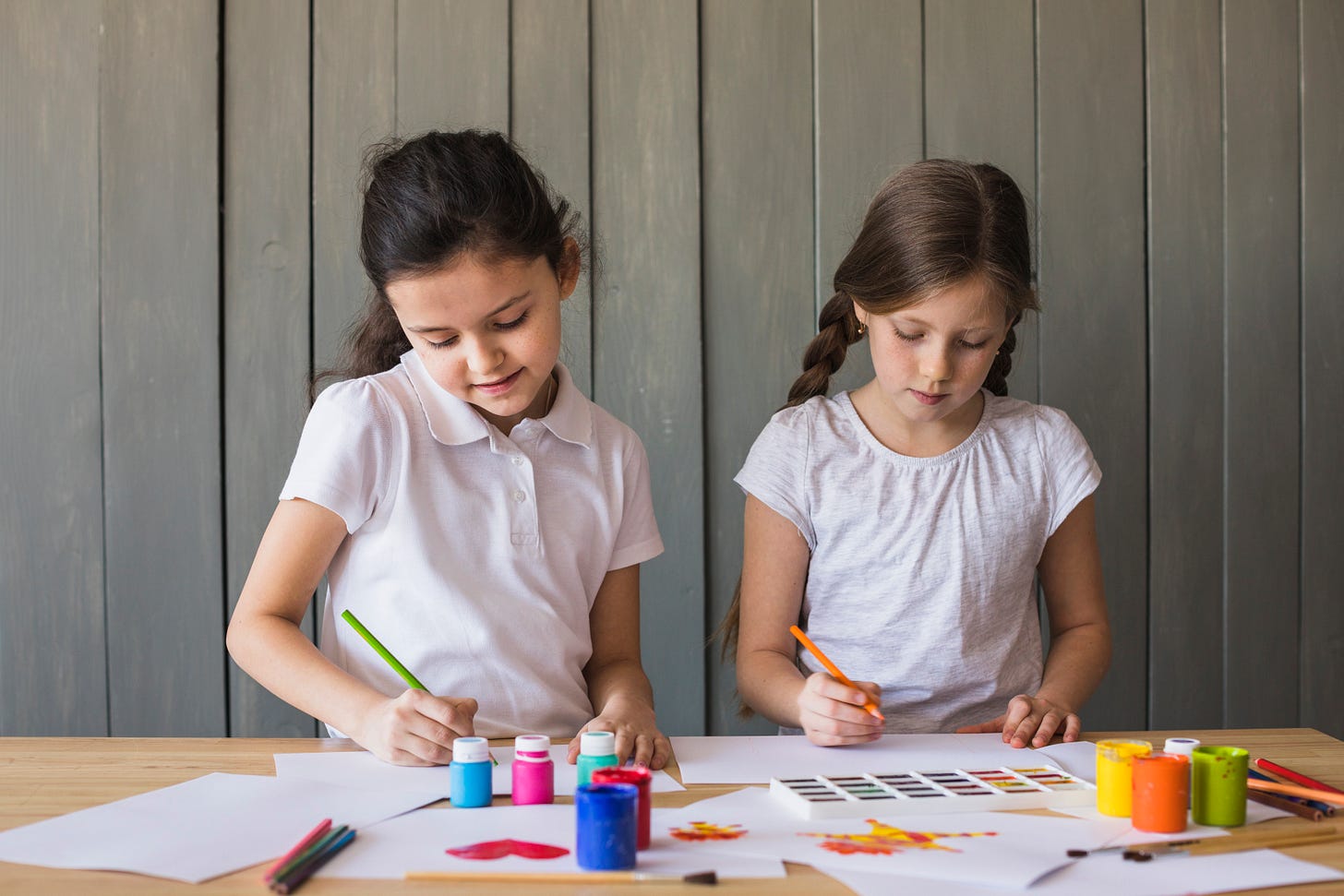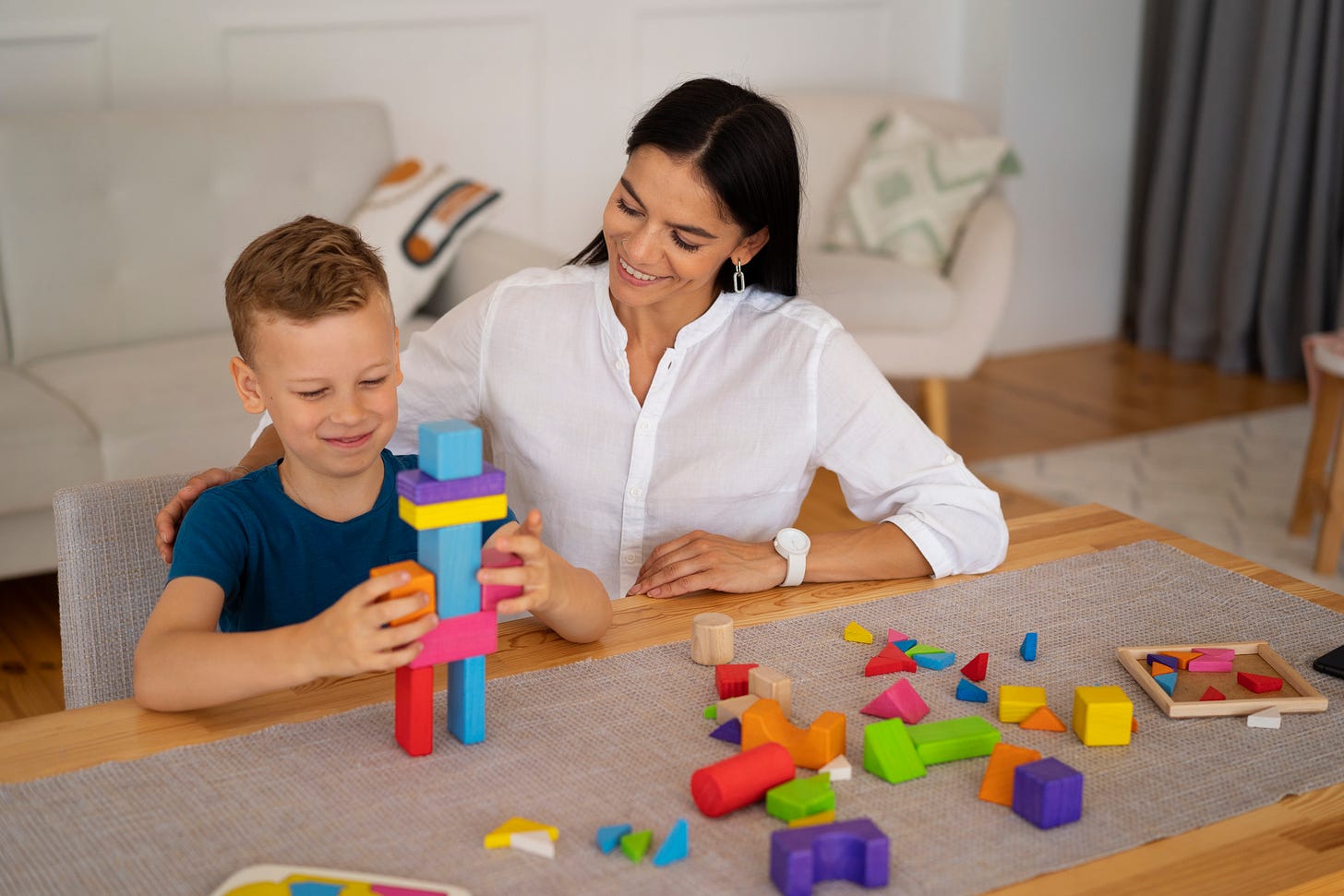In an enlightening episode of The Modern Indian Parent podcast, pediatric nutritionist and host Sanchita Daswani engages with Pranay Dattani, founder of Tickle Right, to explore how critical the early years are in shaping a child’s brain. From practical examples to emotional insights, this episode reveals why early brain development matters, and how every parent, whether stay-at-home or working can support their child’s growth.
52. The Power of Early Brain Development ft. Pranay Dattani, Tickle Right
With 90% of a child's brain formed by age five, this episode dives deep into how parents can foster an environment that enhances cognitive growth through right-brain stimulation.
Introduction and founding of Tickle Right
Pranay began his journey in child development not in classrooms but on the sports field. Initially running a multi-activity center focused on competitive training, he soon realized something crucial: even the most promising child athletes often lost progress when they paused for academic demands. This setback led him to investigate early brain development.
Through extensive research and international training, Pranay founded Tickle Right, with the mission of embedding core abilities like curiosity, emotional intelligence, and critical thinking during the years that matter most: from birth to age 7.
“If we start earlier, skills become more permanent,” says Pranay. “Otherwise, they diminish with reduced practice.”
What Does Holistic Brain Development Mean?
When parents hear terms like “holistic brain development,” it often sounds vague or overly scientific. But as Pranay Dattani explains, the concept is quite straightforward and deeply practical. Holistic Brain Development refers to developing both the right and left hemispheres of a child’s brain in tandem. While the left brain handles reasoning, math, and language, the right brain is responsible for imagination, empathy, and big-picture thinking.
But here’s the catch: the brain doesn’t function in halves.
“Even a simple task like painting involves both hemispheres,” says Pranay. “Creativity may drive the idea, but logic helps decide brush pressure or color choices.”
That’s where holistic development comes in. It’s not about isolating skills—it's about integrating them through play, problem-solving, and real-world application.
Instead of only teaching kids what to think, holistic development helps them understand how to think, how to feel, and how to create, which are skills that form the foundation for everything else in life.
Difference between the Right and Left Brain
The focus is on strengthening abstract thinking and creativity (right brain), but always paired with practical application (left brain). This balanced approach helps children not just imagine new ideas, but also figure out how to bring them to life.
Pranay shares the story of a child named Arsh, who was participating in a Tickle Right class. The task was to build a 3D structure based on a 2D image, which requires not just imagination but also planning and reasoning. While adults typically used four blocks to create the required support, Arsh managed to achieve the same result with just two blocks by approaching the problem differently.
This is a perfect example of the brain working holistically:
The right brain helped Arsh visualize and create.
The left brain helped him strategize and problem-solve.
At Tickle Right, this blend is intentional. Creative thinking is encouraged, but always supported with opportunities for real-world application, helping children strengthen the neural connections they form through play.
How Toys Build Your Child’s Brain
According to Pranay, toys, especially open-ended toys like blocks are powerful tools for brain development when used right.
He shares the story of a child who constructed a 3D model using fewer blocks in a unique structure which is a sign of innovative, applied thinking.
Pranay recommends: “Don’t rush through toys. Let kids explore a single toy in multiple ways over time.”
This approach deepens neural connections, reinforcing both creativity and logic.
Newborn Activities to Nurture Brain Growth
Even newborns are ready for learning. Pranay breaks down how simple acts like tummy time aid not just muscle development but neurological growth through resistance and movement.
He encourages parents to:
Increase sensorial experiences (new smells, textures, sounds).
Use unexpected stimuli to spark curiosity.
Introduce variety (e.g., visual cards, nature sounds, safe household items).
“If your child stares at something 10 seconds longer than usual, you’re building a new brain connection,” says Pranay.
Why is brain development so important in first few years?
The early years witness 90% of brain development. Nearly 60% of a child’s energy goes into developing their brain, not the body.
Hence, any intentional exposure, from music to conversations to new environments has a multiplied impact.
Pranay explains, “If you're going to the gym and only work your biceps, that’s where you’ll see growth. The baby’s brain works the same way and so maximize this natural energy direction.”
How important are schools for brain development?
Should children start school early? According to Pranay, yes but not for academics.
Schools provide an environmental change, new people, and unfamiliar scenarios: all of which stimulate neural activity.
Pranay suggests: “The more environments a child navigates, the more adaptable and cognitively enriched they become.”
That said, play-based learning is key. Pranay likens academic pressure to sitting for the IIT exam which is stressful until expectations are removed. In contrast, play is naturally low-pressure, fostering learning without emotional stress.
Why Play-Based Learning Works:
It's low-pressure, increasing emotional safety.
Kids are free to try, fail, and try again.
They build resilience, creativity, and critical thinking without even realizing it.
The brain is in a happy, open state, ideal for learning.
How Parents Can Promote Creativity Outside of School
Parents often pack post-school hours with structured classes. But Pranay highlights the importance of unstructured, unscheduled time.
Pranay recommends:
Allow 1–2 days a week of “nothing time.”
Encourage imaginative play.
Accept divergent ideas (like a blue strawberry).
“Boredom isn’t bad, it’s a trigger for creativity.”
Letting children explore without judgment fosters self-led discovery and decision-making.
Long term benefits of supporting brain development in early years
Early experiences shape future problem-solving and adaptability. A child exposed to diverse domains such as art, music, nature, language builds a rich database of connections.
“The more connections, the better their ability to analyze and decide,” says Pranay.
Long-term benefits include:
Improved academic performance
Emotional resilience
Creative thinking
Better decision-making
Adaptability in unpredictable situations
How Can Working Parents Help Their Kids Thrive?
Busy parents often wonder how much involvement is enough. Pranay reassures: quality trumps quantity.
Pranay suggests:
Be emotionally available for at least one meaningful hour daily.
Engage in inquiry together. If your child asks a question you don’t know, find the answer with them.
Create a safe emotional space—right-brain learning is deeply tied to emotions.
“Presence is more powerful than perfection,” he says.
How to Teach Kids to Build Resilience?
In today’s fast-paced world, many children struggle with resilience. They hit a challenge and quickly say, “It’s too hard” or “I give up.” Sound familiar?
According to Pranay Dattani, the root of this lies not in the child’s ability, but in how we, as parents, respond to failure.
“It’s okay to fail, but it’s not okay to give up,” he says. “Because the world won’t slow down when things get tough.”
So how can we help our children become more resilient?
1. Acknowledge their frustration, then step in gently.
When your child says something is too hard, don’t force them to continue. Instead, pause. Let the moment pass. Then return to the task together. Offer to help or simply sit beside them as they try again.
2. Model persistence.
Children watch what we do more than they listen to what we say. Show them how you handle tough situations. Keep trying, stay calm, and talk through your thought process out loud.
✅ Pranay recommends: "Tell your child it's okay to fail but then show them that trying again is what really matters."
3. Celebrate effort, not just success.
Whether your child succeeds or not, praise the effort. This helps them value the process of learning, rather than fearing the outcome.
4. Use positive language and open communication.
Instead of saying “Don’t do that,” reframe your guidance in a way that helps them understand what to do. Children don’t process “no” and “don’t” the same way adults do. Be specific and encouraging.
5. Set boundaries with flexibility.
If your child resists an activity, suggest a short, achievable time frame like “Let’s try this for 10 minutes, and if you still don’t enjoy it, we can stop.” This builds both independence and follow-through.
By combining empathy with structure, we help our children develop the internal strength to keep going, even when things get hard. And that’s a skill they’ll carry with them for life.
Every Child Is Different—And That’s Okay
At this point in the conversation, host Sanchita Daswani, a child nutritionist herself, drew a beautiful parallel. Sanchita, also a mother of twins, reflected on how differently her children respond to structure. One thrives with routines; the other prefers open-ended, free-flowing learning. So, is that just personality or something more?
Pranay explains: Yes, it’s true. Some kids do better in structured environments, while others flourish in more creative spaces. But that doesn’t mean we stop teaching essential skills.
He compares it to physical health:
“Whatever your body type, you still need to go to the gym. The workout you enjoy might differ from basketball to running or yoga, but fitness remains essential. Similarly, no matter your child’s personality, they still need to learn problem-solving, adaptability, and emotional strength.”
In other words, the method may vary, but the goal is the same: helping our children grow into capable, emotionally intelligent individuals.
Tickle Right: A Purpose-Driven Platform
Tickle Right is not just another enrichment class. Its goal is to equip children with versatile brain functions so they can navigate an uncertain future.
Pranay explains: “We don’t know what challenges kids will face 20 years from now. But if they have the right abilities, they’ll be ready.”
Tickle Right’s curriculum:
Covers a wide spectrum: periodic table, world history, creativity tasks
Uses play and inquiry as teaching tools
Constantly evolves based on new research and feedback
Pranay suggests that if parents feel they’re reaching their creative limit at home, centers like Tickle Right can fill that gap without overwhelming the child.
But with so many class options available today be it music, sports, math, art, it’s natural for parents to wonder: How do we choose between them? Should we prioritize extracurriculars over a brain-development program?
That’s exactly what host Sanchita Daswani asked:
“Right, so early age is a great time, and also, as parents, we have so many class options—music, sports, math, English. Even though you’ve explained it, how do we choose between those classes and something like Tickle Right?”
Pranay’s answer? You don’t have to choose, there’s space for it all.
He breaks it down with a practical routine:
4 hours of preschool
1 hour of park play
1 hour of structured activity (like Tickle Right)
That still leaves room in a child’s day for variety without overwhelm.
Final Thoughts
This episode of The Modern Indian Parent is a powerful reminder that brain development isn’t about cramming or academics. It’s about:
Creating experiences
Fostering imagination
Allowing failure
Celebrating effort
As Pranay beautifully puts it: “Let’s build abilities, not just achievements.”
By understanding the “why” and “how” of early brain development, parents can feel more confident in their everyday interactions with their children, knowing that small actions lead to lifelong impact.
52. The Power of Early Brain Development ft. Pranay Dattani, Tickle Right
With 90% of a child's brain formed by age five, this episode dives deep into how parents can foster an environment that enhances cognitive growth through right-brain stimulation.






